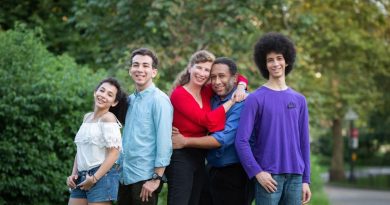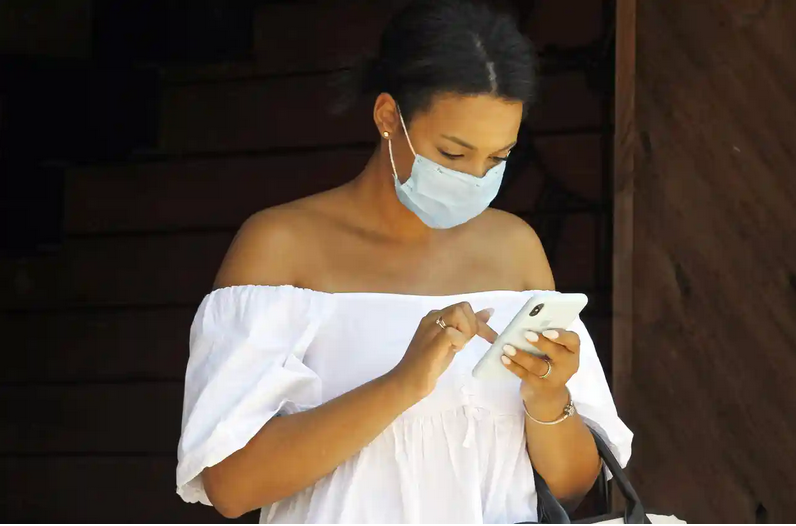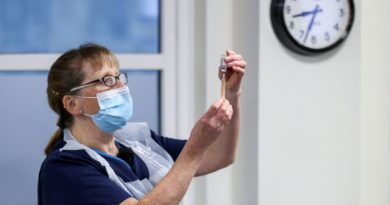How Our Near-Peer Mentoring Model Is Addressing Pandemic Isolation
I felt helpless. In Orange County, Calif., COVID-19 cases were rising exponentially. Local schools had reverted to fully remote learning, restrictions had increased to prevent community spread, and our students and families were experiencing higher levels of COVID-19 infection, food insecurity, housing insecurity and isolation from their peers than had been the case since the pandemic started nearly nine months earlier.
It was December 2020. Every other text message I got was from a student or family member asking for help. Our program, Breakthrough San Juan Capistrano (SJC), had provided grocery cards to families, referred them to food and housing assistance programs, and connected them to mental health services. But it wasn’t enough.
I started to ask myself: What can we do with our current capacity? How will we do it? With so many needs, what should we try to address first?
As a first-generation student of color from a low-income background, and as a former teen parent who had overcome countless challenges in my childhood and adulthood to become Breakthrough SJC’s executive director, I understood how important it was that we support our students through this tumultuous period. But I worried I couldn’t help them to the extent that they needed and deserved.
Our staff’s capacity was limited, and our resources even more so. We were searching for a solution that would be a low lift but go a long way—a combination hard to come by in education.
We ultimately agreed that our priority was to address what we saw as our students’ most urgent need during the pandemic: forging meaningful relationships and a sense of community. And by January, we had come up with an idea and were ready to pilot it.
Addressing the Issue of Isolation
Students of all ages, from early childhood through college, have experienced the disruption caused by the COVID-19 pandemic, whether it was from colleges and universities abruptly shutting down in March, leaving college students stranded on campus, or the learning loss experienced by K-12 students as they navigated remote learning. Isolation was at the core of the challenges faced by students. They experienced isolation from their peers, teachers and entire communities, leading to increased mental health challenges that some practitioners have referred to as a “mental health tsunami.”
Solutions to address pandemic disruption among students have ranged from extended summer school to training teachers and paraprofessionals for intensive tutoring—all rightly focused on academic interventions, but few addressing student isolation directly. Not to mention that these solutions rely on significant financial resources, human capital and infrastructure investment, none of which we had or could reasonably justify.
So we came up with another solution—one that required minimal resources but went a long way in helping students feel engaged and connected: students supporting students to overcome pandemic isolation.
Middle schoolers and college students, we realized, experienced similar effects from the pandemic—albeit, in different contexts—and they all have faced isolation. So we developed a near-peer mentoring program, which we hoped would allow students the chance to build relationships, deepen bonds and get academic support all at once.
Piloting Our Plan
In earnest, our pilot program started in January and continued through the spring.
Breakthrough SJC is an education nonprofit embedded in an independent school but serving about 300 students across our Orange County, Calif., community. Our underlying vision is to increase the number of college graduates from historically underrepresented backgrounds by serving students starting in middle school through their graduation from college. We are affiliate members of Breakthrough Collaborative, a national organization which serves over 10,000 students each year.
The University of California, Irvine, helped us recruit and place the college students who would eventually lead the “virtual learning pods,” as we call them. UC Irvine also provided us with research and program design guidance, a model to build upon and learning pod leaders who were offered professional development every two weeks. The PD sessions covered a range of topics, including how to build community virtually, social-emotional considerations and family engagement.
Our mentoring program connected 21 local college students—many of whom shared our students’ backgrounds as first-generation students and students of color—with small groups of our middle and high schoolers, numbering about 150 in all.
Students meet for an hour on Zoom every week for 10 weeks, trading texts and emails between meetings. One virtual learning pod might play a group game on Kahoot, while another watches a movie together. Some pod leaders check in with students individually about their grades in breakout rooms or discuss some of their shared challenges and successes. The goal is to get them talking.
Our learning pod leaders—the college students—often spend the first few minutes of a Zoom meeting trying to coax students out of their comfort zones and encourage them to start sharing.
How are you? They might ask. Did you have a good weekend? How is everything going in school? Does the material you are learning make sense?
Using their own judgment, if the pod leaders sense the students are struggling or simply aren’t opening up, they might suggest breakout rooms where each student meets one-on-one with the pod leaders.
“I know you are all very smart,” one pod leader told her students during a recent session, “and it’s not at all to make you feel uncomfortable, but I’d like to make sure you are doing OK, and see if there’s anything I can do to help you.”
We later asked our Breakthrough SJC students what they gained from attending virtual learning pods. Their answers ran the gamut, from supporting their mental health, to helping them stay motivated, to allowing them a place where they can socialize and stay connected to others.
College Students Are the Key
Our program wouldn’t have been possible without cross-organizational collaboration with UC Irvine and others. But by far the most important element of the program’s success was the college students.

Sarah is a first-generation college senior studying psychology and educational sciences. She benefited from a college preparation program not unlike Breakthrough SJC while growing up in Pomona, Calif., so she understood the importance of community support and resources for young students, especially those from underrepresented backgrounds. She decided to become a virtual learning pod leader because she wanted to help students succeed in their academic pursuits. For her, it was about paying it forward.
As Sarah said in a testimonial, “It was rewarding to give back to the community because I remember being one of those students back in middle school, but I had no guidance or mentors. It also impacted me by motivating me further in serving [in] underrepresented communities.”
Her sentiment about sharing a sense of connection—be it a shared background or the struggles of being a student during the pandemic—wasn’t unique among the cohort of learning pod leaders.
Of the 21 learning pod leaders, 86 percent identified as people of color, and 86 percent were the first members of their family to attend college. In comparison, 98 percent of Breakthrough SJC students identify as people of color, and 84 percent would be the first members of their family to attend college. The near-peer aspect, coupled with the students’ similar educational experiences, underpinned the design and ultimate impact of the virtual learning pods.

When the Breakthrough SJC students were asked: “What are some things you have in common with your learning pod leader?” And, “What are the things that you like about your learning pod leader?” They said things like:
- We both are Hispanic.
- We’re both students going through the same things.
- My leader and I had difficulty, during the beginning of the pandemic, attending classes.
- We both are good at math.
- He is a relatable person.
- She helps us when we need help, she’s kind, and makes things interesting and fun.
- I liked how she was able to give me advice as well as help me with my homework.
Setting up for Success
Several research studies have shown the efficacy of near-peer and other mentorship programs on students from underrepresented backgrounds in supporting students’ social-emotional needs, boosting their self-esteem and academic performance, and leading to other positive outcomes. As one study concluded, “Mentors acted both as guides who shared information and as caring friends who were providing psychosocial support, including normalizing struggle.”
But the positive effects aren’t one-sided; they apply to both groups. Another study found that “both leaders and students benefit from the enhanced learning experience. Peer leaders increase their understanding of the subject matter, develop an increased sense of responsibility and confidence, [and] improve their oral communication skills.”
The greatest outcome of our virtual learning pods was the new relationships that were formed. Indeed, the structure of each session was grounded in building community and deepening relationships.
Through the guidance of our university partner, we designed the virtual learning pods to be:
- Intentionally small: Each pod includes no more than six students.
- Focused on the group’s needs: Each pod is unique. The group determines its objectives, activities are fluid, and goals are centered around social-emotional support, technology, and academics.
- Community-oriented: The group members are intended to be supportive, engaged with one another’s families and actively communicative.
For my staff, implementing learning pods successfully and with limited capacity required clear goals, strong communication channels, and autonomy for learning pod leaders. We tasked pod leaders with building community, being creative, being authentic and providing academic guidance to their mentees. And they exceeded our every expectation, holding weekly meetings between themselves to share successes and challenges and talking regularly on Slack. In an isolating time, they made good communication a priority.
Reflecting on Our First Attempt
We learned a few things from our pilot, including approaches we hope can help other organizations hoping to launch similar programs in their communities:
- College students are an untapped local asset. They provide structure, support, autonomy, relatability and creativity.
- Leverage technology. When digital technology gaps are addressed, virtual platforms can create access for K-12 and college students alike.
- Identify community partners. If your school has limited resources or domain knowledge, strategic partnerships across sectors can amplify impact, deepen expertise and expand capacity.
- Focus on non-academic needs. Relationships and connection are the keys to mollifying isolation and lead to better mental health and academic outcomes.
- Embrace a little uncertainty. Pilots, especially ones with multiple stakeholders, will need to be course-corrected as you navigate the implementation. We experienced our share of challenges, but we learned, adjusted and persevered.
In April, when our pilot had been going strong for a few months, I sat and observed a virtual learning pod in action. The learning pod leader was sharing her highs, lows and hopes for that week, and an overwhelming feeling of relief overcame me. I started to cry. I recognized that I didn’t feel helpless, as I had back in December. I saw the power of relationships affecting our students right in front of me. The older students were supporting our younger students so well. And our younger students have made an indelible impact on their pod leaders. But I hadn’t realized, until then, how much the relationships I had built with our learning pod leaders had impacted me, too.
Relationships are important and should be at the core of all of our efforts as we navigate our post-pandemic world. It is deep connections, more than anything else, that will drive us to overcome isolation, and help us to address the countless challenges facing students, educators and the broader education system.
Source: https://www.edsurge.com/news/2021-05-18-how-our-near-peer-mentoring-model-is-addressing-pandemic-isolation




